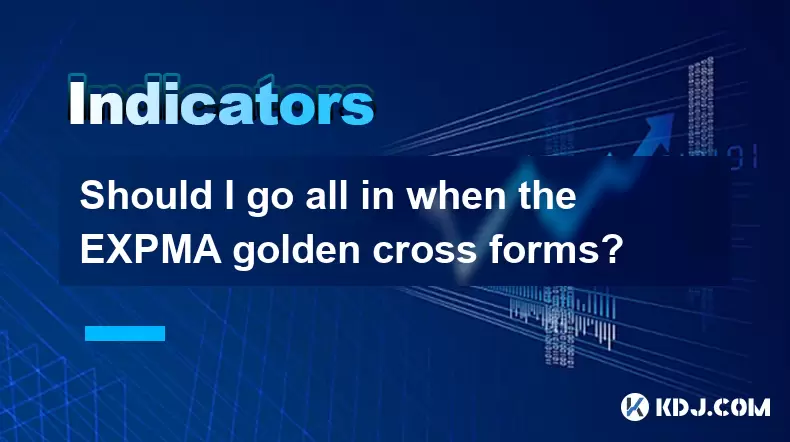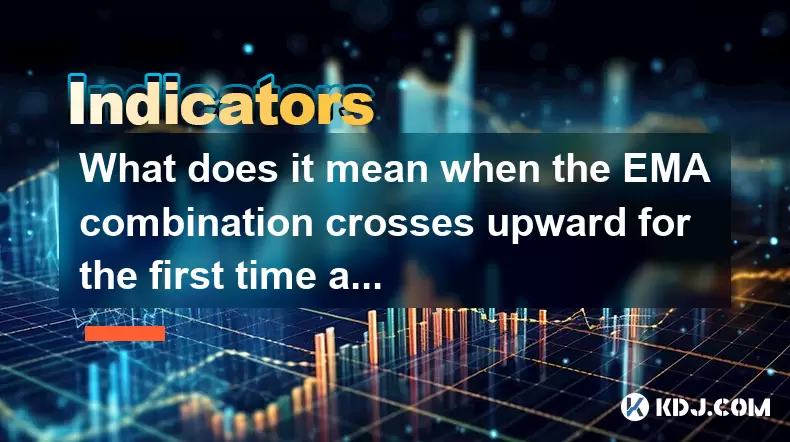-
 Bitcoin
Bitcoin $119800
1.38% -
 Ethereum
Ethereum $3873
3.25% -
 XRP
XRP $3.247
1.85% -
 Tether USDt
Tether USDt $1.001
0.02% -
 BNB
BNB $840.4
5.94% -
 Solana
Solana $190.0
2.55% -
 USDC
USDC $1.000
0.03% -
 Dogecoin
Dogecoin $0.2433
2.69% -
 TRON
TRON $0.3197
-0.05% -
 Cardano
Cardano $0.8367
1.39% -
 Sui
Sui $4.327
3.11% -
 Hyperliquid
Hyperliquid $44.00
0.31% -
 Stellar
Stellar $0.4461
1.76% -
 Chainlink
Chainlink $19.25
4.61% -
 Hedera
Hedera $0.2941
3.90% -
 Bitcoin Cash
Bitcoin Cash $598.4
6.89% -
 Avalanche
Avalanche $26.19
4.67% -
 Litecoin
Litecoin $115.1
0.50% -
 Shiba Inu
Shiba Inu $0.00001427
1.55% -
 Toncoin
Toncoin $3.379
2.01% -
 UNUS SED LEO
UNUS SED LEO $8.966
-0.16% -
 Ethena USDe
Ethena USDe $1.001
0.02% -
 Uniswap
Uniswap $11.04
4.16% -
 Polkadot
Polkadot $4.239
2.00% -
 Monero
Monero $324.6
0.36% -
 Bitget Token
Bitget Token $4.672
2.46% -
 Pepe
Pepe $0.00001294
2.69% -
 Dai
Dai $0.0000
0.01% -
 Cronos
Cronos $0.1443
2.71% -
 Aave
Aave $302.9
1.98%
Should I go all in when the EXPMA golden cross forms?
The EXPMA golden cross signals potential bullish momentum, but traders should validate with volume, RSI, and higher timeframes—never go all in based on this signal alone.
Jul 28, 2025 at 10:15 am

Understanding the EXPMA Golden Cross in Cryptocurrency Trading
The EXPMA (Exponential Moving Average) is a technical analysis tool widely used in cryptocurrency trading to identify trends by smoothing price data over a specified period. The golden cross occurs when a short-term EXPMA line crosses above a long-term EXPMA line, typically the EXPMA(12) crossing above the EXPMA(26). This pattern is interpreted as a bullish signal, suggesting that upward momentum is building. Traders often view this as a potential entry point. However, acting solely on this signal without further validation can be risky. The crypto market is highly volatile, and false signals are common, especially during sideways or low-volume periods. It's crucial to understand that the golden cross is a lagging indicator, meaning it reflects past price movements rather than predicting future ones with certainty.
Why "Going All In" Is a High-Risk Strategy
"Going all in" refers to allocating 100% of one’s available capital into a single trade based on a perceived opportunity. In the context of an EXPMA golden cross, this approach exposes traders to extreme risk. Cryptocurrency prices can reverse sharply due to macroeconomic news, exchange outages, or whale movements. Even if the golden cross appears on a daily chart, short-term volatility can trigger liquidations in leveraged positions or cause panic selling. A single adverse event could wipe out an entire portfolio. Risk management principles in trading emphasize position sizing, diversification, and stop-loss placement. Ignoring these in favor of an emotional response to a technical signal undermines long-term sustainability. The psychological pressure of holding a full-position investment can also impair judgment during market corrections.
How to Properly Validate the EXPMA Golden Cross Signal
Before considering any position, traders should validate the golden cross using multiple layers of confirmation. This process increases the reliability of the signal:
- Check the volume trend alongside the cross. A surge in trading volume during the crossover strengthens the bullish case, indicating strong buyer participation.
- Examine the Relative Strength Index (RSI) to ensure the asset isn’t already overbought. An RSI above 70 may suggest limited upside potential.
- Look at support and resistance levels. If the price is approaching a known resistance zone, the golden cross might not be enough to break through.
- Confirm alignment with higher timeframes. A golden cross on the 4-hour chart gains more weight if the daily chart also shows bullish structure.
- Use on-chain data such as exchange inflows/outflows or wallet activity to assess market sentiment from a fundamental perspective.
Step-by-Step Guide to Entering a Trade After an EXPMA Golden Cross
Executing a trade based on the golden cross should follow a structured approach to minimize risk and maximize clarity: - Wait for the full candle closure after the crossover. Never act on an intraday wick or partial candle; confirmation requires a completed period.
- Set a limit order slightly above the crossover point to avoid slippage during volatile entries.
- Define a stop-loss level below the recent swing low or below the long-term EXPMA line. For example, if the golden cross occurs at $30,000 on Bitcoin, placing a stop at $28,500 protects against false breakouts.
- Determine a position size based on risk tolerance. A common rule is to risk no more than 1–2% of the total portfolio on a single trade.
- Use trailing stops or partial profit-taking targets. For instance, sell 50% of the position when price reaches 1.5x the risk distance, then let the rest run with a trailing stop.
- Monitor market news and funding rates continuously. High funding rates in perpetual futures may indicate over-leveraged longs, increasing the chance of a squeeze.
Alternative Strategies to "Going All In" After a Golden Cross
Instead of committing full capital, traders can adopt safer, more strategic approaches: - Pyramiding: Enter with a small initial position (e.g., 25%) upon the golden cross, then add more as the trend confirms with higher highs and higher lows.
- Dollar-cost averaging (DCA) into the trend: Buy fixed amounts at regular intervals after the cross, reducing the impact of short-term volatility.
- Using options or futures with defined risk: Buy call options or enter futures with strict leverage limits (e.g., 2x–3x) to gain exposure without full capital deployment.
- Pairing with on-chain metrics: Only act if the Network Value to Transactions (NVT) ratio is within normal range and exchange outflows are rising, indicating accumulation.
- Combining with moving average ribbons: Look for multiple EXPMA lines (e.g., 8, 12, 26, 50) aligning in ascending order, which adds confluence to the golden cross.
Common Misconceptions About the EXPMA Golden Cross
Many traders believe the golden cross is a guaranteed buy signal, but this is a dangerous oversimplification. The timeframe matters significantly—a golden cross on a 5-minute chart carries far less weight than one on a weekly chart. Additionally, not all cryptocurrencies react the same way to technical signals. Low-cap altcoins may exhibit whipsaws due to low liquidity, making EXPMA signals unreliable. Another misconception is that the golden cross works in isolation. In reality, it functions best within a broader trading system that includes volume analysis, market context, and macro trends. Relying solely on this indicator without context leads to overtrading and emotional decision-making.Frequently Asked Questions
Q: Can the EXPMA golden cross be used on altcoins with low trading volume?
A: It is not advisable. Low-volume altcoins are prone to price manipulation and erratic movements. The EXPMA lines may generate frequent false signals due to insufficient data smoothing. Traders should focus on high-liquidity assets like Bitcoin or Ethereum when using EXPMA strategies.Q: What EXPMA periods are most effective for day trading crypto?
A: For day trading, common combinations include EXPMA(9) and EXPMA(21) or EXPMA(12) and EXPMA(26) on 15-minute or 1-hour charts. These settings balance responsiveness and noise reduction. Backtesting on historical data for specific assets is recommended to fine-tune parameters.Q: How do I adjust my strategy if the price drops below the EXPMA lines after a golden cross?
A: This indicates a potential failure of the bullish signal. Immediately reassess the trade. If your stop-loss is triggered, exit the position. If not, consider reducing exposure or tightening the stop. Do not hold based on hope—stick to predefined rules.Q: Is the EXPMA golden cross more reliable in bull markets than in bear markets?
A: Yes. In established bull markets, momentum supports trend-following indicators like EXPMA. During bear markets, rallies are often short-lived, leading to fake golden crosses. Always assess the broader market phase using tools like the Bitcoin dominance chart or Mayer Multiple before acting.
Disclaimer:info@kdj.com
The information provided is not trading advice. kdj.com does not assume any responsibility for any investments made based on the information provided in this article. Cryptocurrencies are highly volatile and it is highly recommended that you invest with caution after thorough research!
If you believe that the content used on this website infringes your copyright, please contact us immediately (info@kdj.com) and we will delete it promptly.
- Crypto's Next Big Meme: Is MAGACOIN Finance the New DOGE or SHIB?
- 2025-07-28 17:15:12
- Altcoins, Cryptos, and 250x Potential: Catching the Next Wave
- 2025-07-28 17:15:12
- Ethereum ETFs Steal the Show: Bitcoin Disparity and Whale Buys Fuel ETH Rally
- 2025-07-28 17:20:12
- Whale Alert: Solana Dive into Vine Coin – Risky Move or Genius Play?
- 2025-07-28 17:20:12
- ERC-20 Tokens: Still Ruling Ethereum in the 2020s?
- 2025-07-28 17:25:15
- Bitcoin, Ethereum, Lost Forever: A Billion-Dollar Digital Black Hole
- 2025-07-28 14:30:12
Related knowledge

What does it mean when the EMA combination crosses upward for the first time after sideways trading?
Jul 28,2025 at 03:43pm
Understanding the EMA and Its Role in Technical AnalysisThe Exponential Moving Average (EMA) is a widely used technical indicator in cryptocurrency tr...

What signal does the ROC send when it rises rapidly from a low level and breaks through the zero axis?
Jul 27,2025 at 10:15am
Understanding the Rate of Change (ROC) IndicatorThe Rate of Change (ROC) is a momentum-based oscillator used in technical analysis to measure the perc...

What does it mean when the price breaks through the double bottom neckline and the moving averages are arranged in a bullish pattern?
Jul 28,2025 at 10:57am
Understanding the Double Bottom PatternThe double bottom is a widely recognized reversal chart pattern in technical analysis, particularly within the ...

What signal does the DMA fast line cross the slow line above the zero axis?
Jul 28,2025 at 05:42am
Understanding the DMA Indicator and Its ComponentsThe DMA (Difference of Moving Averages) indicator is a technical analysis tool used in cryptocurrenc...

What does it mean that the rebound is blocked after the moving average is arranged in a short position for the first time?
Jul 26,2025 at 10:51am
Understanding the Short-Term Moving Average ConfigurationWhen traders refer to a 'short position arrangement' in moving averages, they are describing ...

What does it mean that the ZIGZAG low point is raised and the high point breaks through the previous peak?
Jul 28,2025 at 03:28am
Understanding the ZIGZAG Indicator in Cryptocurrency TradingThe ZIGZAG indicator is a technical analysis tool widely used in cryptocurrency trading to...

What does it mean when the EMA combination crosses upward for the first time after sideways trading?
Jul 28,2025 at 03:43pm
Understanding the EMA and Its Role in Technical AnalysisThe Exponential Moving Average (EMA) is a widely used technical indicator in cryptocurrency tr...

What signal does the ROC send when it rises rapidly from a low level and breaks through the zero axis?
Jul 27,2025 at 10:15am
Understanding the Rate of Change (ROC) IndicatorThe Rate of Change (ROC) is a momentum-based oscillator used in technical analysis to measure the perc...

What does it mean when the price breaks through the double bottom neckline and the moving averages are arranged in a bullish pattern?
Jul 28,2025 at 10:57am
Understanding the Double Bottom PatternThe double bottom is a widely recognized reversal chart pattern in technical analysis, particularly within the ...

What signal does the DMA fast line cross the slow line above the zero axis?
Jul 28,2025 at 05:42am
Understanding the DMA Indicator and Its ComponentsThe DMA (Difference of Moving Averages) indicator is a technical analysis tool used in cryptocurrenc...

What does it mean that the rebound is blocked after the moving average is arranged in a short position for the first time?
Jul 26,2025 at 10:51am
Understanding the Short-Term Moving Average ConfigurationWhen traders refer to a 'short position arrangement' in moving averages, they are describing ...

What does it mean that the ZIGZAG low point is raised and the high point breaks through the previous peak?
Jul 28,2025 at 03:28am
Understanding the ZIGZAG Indicator in Cryptocurrency TradingThe ZIGZAG indicator is a technical analysis tool widely used in cryptocurrency trading to...
See all articles

























































































